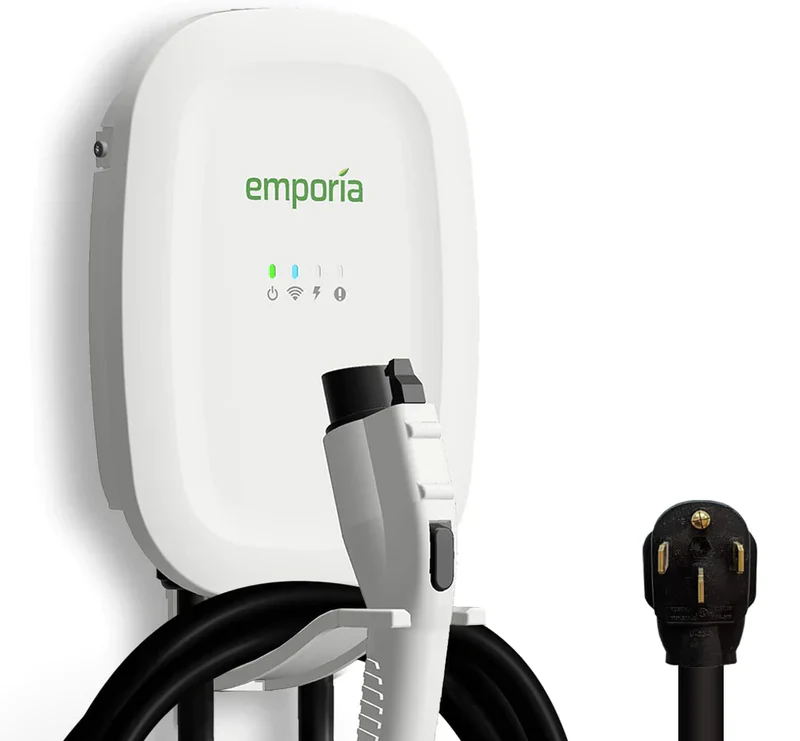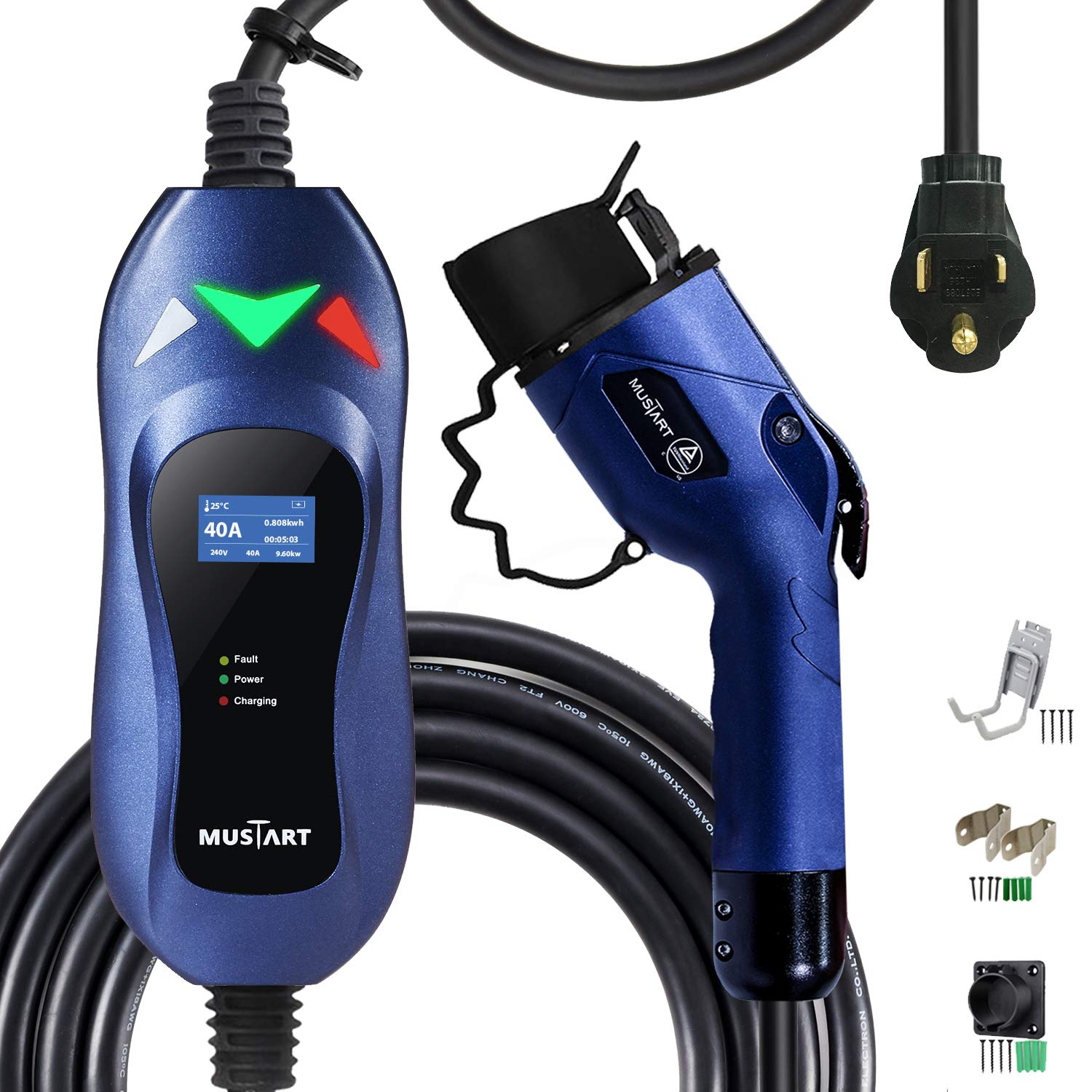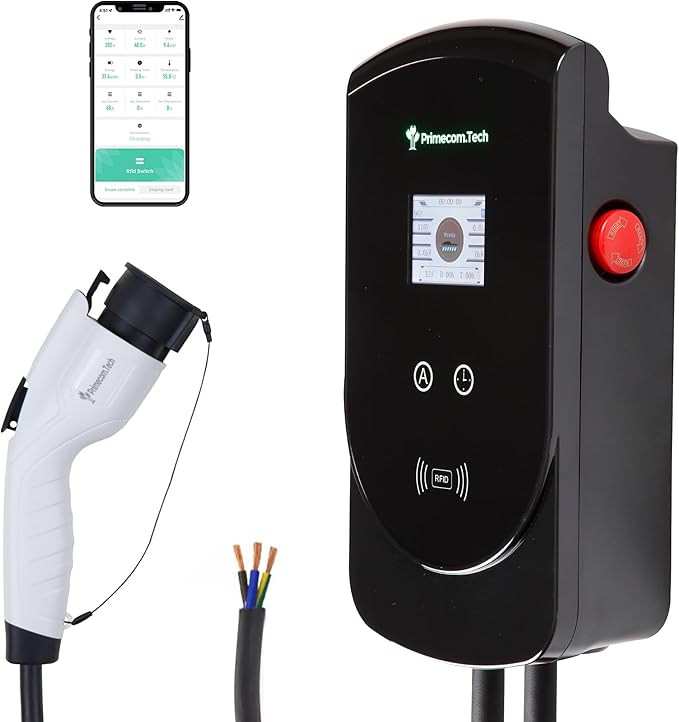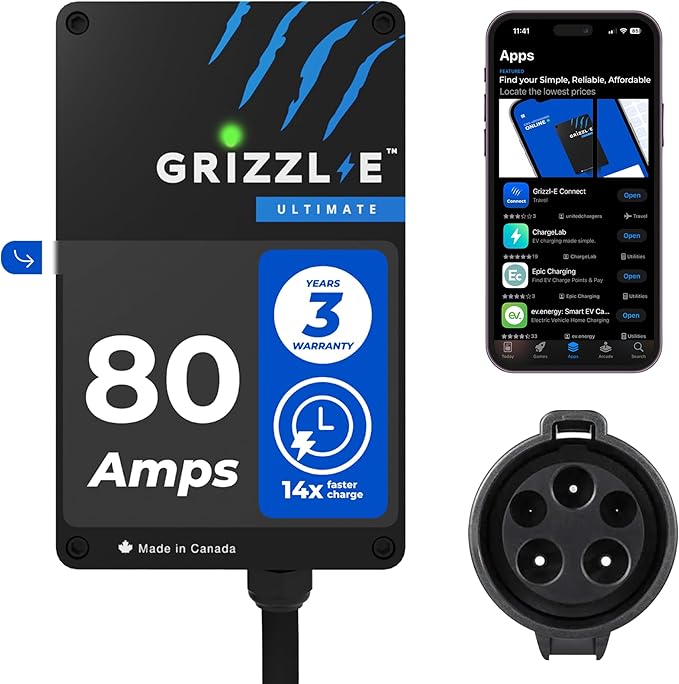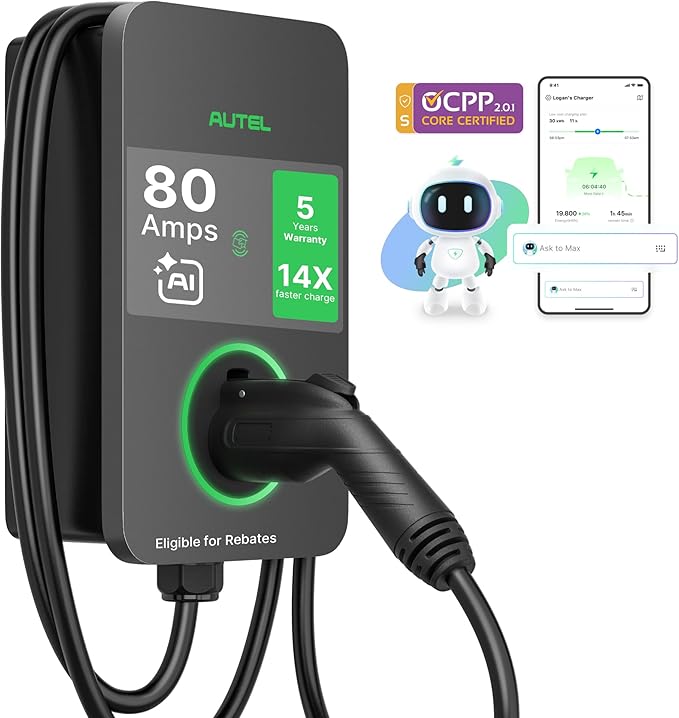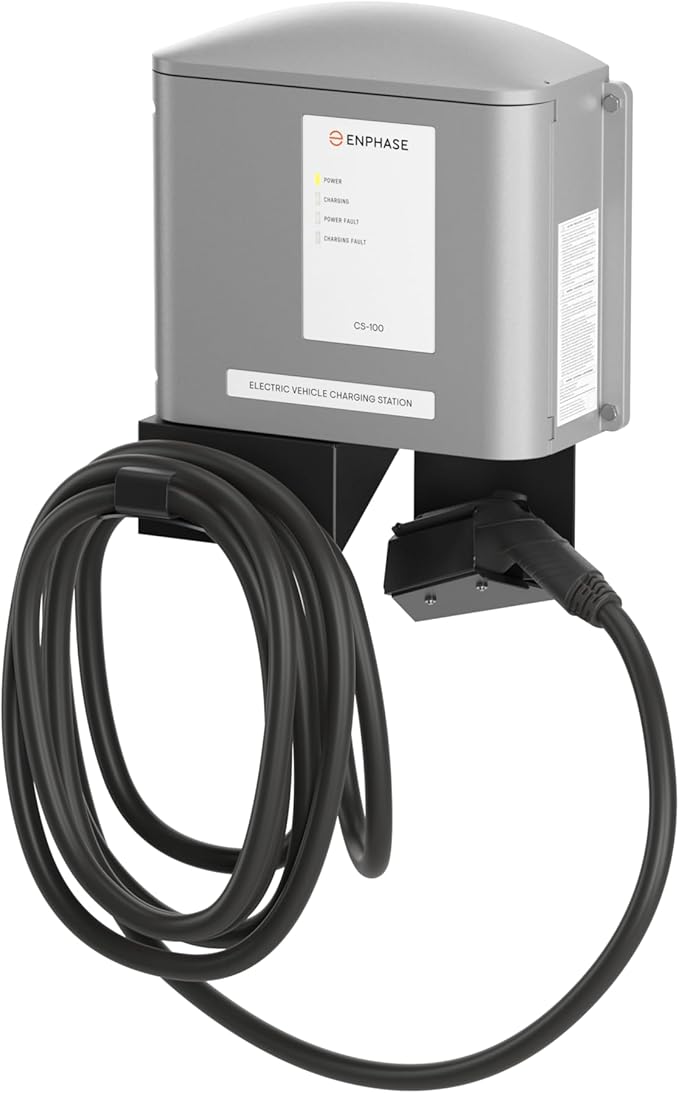As the shift toward electric vehicles (EVs) accelerates, companies are rethinking their infrastructure — and that includes offering workplace EV charging. While the majority of EV owners still charge at home, providing charging stations at work is quickly becoming a competitive advantage and a powerful move toward corporate sustainability.
Why Businesses Are Adding EV Charging Stations
Workplace EV charging is more than just a convenience — it’s a strategic move that positions your business as forward-thinking, environmentally responsible, and ready for the next era of transportation. As electric vehicle adoption rises across the U.S., companies that invest in charging infrastructure are setting themselves apart from competitors, improving internal operations, and aligning with key stakeholder values.
Here’s why more businesses are making the switch:
Supporting Corporate Sustainability Goals
For companies with environmental, social, and governance (ESG) initiatives or carbon reduction targets, installing electric vehicle charging stations is a tangible way to make progress. EV charging supports the use of cleaner transportation alternatives and directly contributes to lowering greenhouse gas emissions. According to the U.S. Environmental Protection Agency (EPA), EVs produce significantly fewer emissions over their lifetime compared to gasoline-powered vehicles. By offering EV charging, companies demonstrate their commitment to sustainability in a visible, meaningful way.
Enhancing Employee Benefits and Retention
Workplace EV charging is increasingly seen as a valuable employee perk. Many workers — particularly those who live in apartments or urban areas — lack access to reliable home charging. Giving employees the ability to charge their vehicles during work hours not only supports their transition to electric but also shows that the company is invested in their well-being. This kind of infrastructure can improve morale, aid in recruitment, and help retain top talent in a competitive job market.
Creating a Modern, Eco-Friendly Brand Image
EV charging stations send a clear message: your business embraces innovation and cares about its environmental footprint. Whether it’s prospective employees, partners, investors, or clients, stakeholders take note when companies prioritize sustainable practices. EV charging infrastructure enhances a company’s brand reputation, especially in industries where corporate social responsibility is closely watched.
Accommodating Business Fleets and Visitors
Beyond employees, EV charging can benefit visiting customers, vendors, and clients — and can also support the electrification of your company’s own vehicle fleet. As more organizations look to reduce fleet fuel costs and maintenance expenses, EVs offer a compelling alternative. Having onsite charging allows for efficient management of company-owned electric vehicles and demonstrates a long-term investment in operational efficiency.
Increasing Property Value and Tenant Appeal
Installing EV chargers can significantly boost the value of commercial properties. For landlords, it’s a way to attract high-quality tenants who are looking for modern, flexible office space. For property owners, it’s an investment that appeals to a growing number of eco-conscious businesses. In many cases, EV infrastructure is now considered a premium amenity — similar to high-speed internet or solar panels — and can make a property stand out in a competitive market.
Backing Up Sustainability with Action
It’s one thing to talk about sustainability — it’s another to demonstrate it through real, measurable initiatives. Electric vehicle (EV) charging infrastructure is one of the most visible and impactful ways a business can turn climate commitments into concrete action. By investing in workplace EV chargers, companies move beyond sustainability buzzwords and offer practical support for clean transportation.
EV chargers aren’t just symbolic — they directly reduce emissions associated with employee commuting, which can be a surprisingly large share of a company’s overall carbon footprint. In fact, according to the U.S. Department of Energy, transportation is the largest source of greenhouse gas emissions in the United States. At large organizations, the combined emissions from employee commutes can often exceed the emissions generated by building operations like heating, cooling, and lighting.
By enabling employees to switch from gas-powered vehicles to electric ones, workplace charging stations offer a straightforward path to emissions reduction. This makes them a valuable tool in meeting corporate sustainability goals, including:
- Carbon neutrality commitments
- Green building certifications (like LEED)
- Environmental, Social, and Governance (ESG) benchmarks
- Corporate social responsibility (CSR) targets
Additionally, EV infrastructure aligns with state and federal policy trends encouraging a shift toward electric transportation. Forward-thinking companies that adopt charging early are not only helping the planet — they’re staying ahead of regulatory curves and positioning themselves for long-term success.
Whether you're aiming for net-zero emissions or just beginning to build out your sustainability strategy, EV charging is a powerful step forward. It signals to employees, investors, and customers that your company is serious about reducing its environmental impact — and willing to invest in the tools to make it happen.
A Meaningful Benefit for Employees
For many workers, access to a reliable EV charging station at work can be the difference between choosing an electric vehicle or sticking with gas. While home charging is ideal, not all employees have that option. Some live in apartment complexes without designated parking, others depend on street parking, and many rental properties still lack EV infrastructure. For these individuals, workplace charging isn't just a nice-to-have — it’s essential.
By offering EV charging at the office, businesses help eliminate one of the most significant barriers to EV adoption: access to charging. When employees know they can plug in during the workday, they gain the freedom to make environmentally responsible transportation choices without the burden of installing costly at-home solutions.
Workplace EV charging also provides several practical benefits:
- Supports drivers of plug-in hybrid electric vehicles (PHEVs): These vehicles typically offer a smaller all-electric range than full battery-electric models. Workplace charging allows PHEV owners to top off their battery during the day, maximizing electric usage and minimizing gasoline consumption.
- Offers peace of mind for busy schedules: Life happens — sometimes people forget to charge at home, especially if their routine is disrupted. Having chargers at work ensures they won’t be left scrambling for a public station during the day.
- Reduces range anxiety for longer commutes: Employees with extended travel distances to and from work often worry about having enough range to get through the day. Knowing they can recharge at the office reduces that stress and supports broader EV adoption.
By installing EV stations, employers offer a meaningful, daily benefit that improves employee satisfaction, boosts retention, and aligns with modern workforce expectations — all while promoting clean energy solutions.
Create a Great First Impression for Visitors
In today’s competitive business landscape, every customer interaction and on-site experience matters — especially the first impression. For electric vehicle (EV) drivers visiting your workplace — whether they’re clients, partners, vendors, or job candidates — visible EV charging infrastructure sends a clear, positive message. It shows your organization is modern, forward-thinking, and actively engaged in sustainability.
While many businesses focus on aesthetics or amenities in visitor areas, offering EV charging is a practical, high-impact feature that speaks volumes about your values. It signals that your company recognizes the shift toward clean transportation and is making meaningful changes to support it. For sustainability-minded professionals, this attention to detail can enhance your reputation and deepen trust.
Designating EV chargers for guest or visitor parking also provides several tangible benefits:
- Extends thoughtful hospitality to EV drivers: Just like offering Wi-Fi, accessible restrooms, or complimentary refreshments, EV charging is a convenience that shows you care about the experience of your visitors. For someone who may have traveled a long distance or is on a tight schedule, being able to charge their vehicle while in a meeting or tour is a welcome relief.
- Reinforces your corporate sustainability commitment: EV infrastructure doesn’t just benefit employees. When guests see charging stations on your property, it reinforces your environmental efforts in a concrete, visible way. It turns abstract sustainability goals into on-the-ground action that people can see and use.
- Helps differentiate your brand: In industries where innovation, social responsibility, and customer experience matter, having EV charging can set your brand apart. It positions your business as not only keeping up with industry trends but leading them — something that can make a real difference when attracting talent, impressing clients, or securing partnerships.
As electric vehicle adoption continues to grow, offering charging for visitors is a smart, future-proof investment that enhances your image and provides genuine value to the people you do business with. For more guidance on installing public and workplace EV charging, refer to resources from the Alternative Fuels Data Center, part of the U.S. Department of Energy.
Electrifying the Company Fleet
Transitioning your company’s fleet from gas-powered vehicles to electric ones is more than just an environmental move — it’s a financially strategic decision with long-term benefits. Electric fleet vehicles can save organizations thousands of dollars annually through reduced fuel consumption, lower maintenance requirements, and improved energy efficiency.
As fuel prices continue to rise and governments at every level introduce stricter emissions regulations, businesses across industries are prioritizing fleet electrification. According to the U.S. Department of Energy, electric vehicles (EVs) offer lower fuel costs, fewer moving parts, and greater overall energy efficiency compared to internal combustion engine (ICE) vehicles — making them ideal for both urban and regional fleets.
Workplace EV charging infrastructure plays a critical role in making this transition successful. By installing on-site Level 2 charging stations, businesses can ensure their fleet vehicles are consistently charged and ready for use without relying on third-party or public stations.
Key advantages of workplace fleet charging include:
- Streamlined charging logistics: Vehicles can be charged on-site overnight or during the workday, minimizing downtime and avoiding the inefficiencies of off-site charging.
- Reduced total cost of ownership (TCO): Electric fleets cost significantly less to operate over time. Maintenance costs are lower due to fewer parts (no oil changes, spark plugs, or transmission repairs), and electricity is generally more affordable and predictable than gasoline or diesel.
- Improved emissions compliance: With many cities and states adopting clean transportation mandates, having an electric fleet helps organizations comply with local air quality regulations and federal programs, such as those overseen by the U.S. Environmental Protection Agency (EPA). Electrifying your fleet now can help future-proof operations against upcoming legislation or low-emission zones.
- Ideal for stop-and-go or short-haul routes: EVs excel in environments with frequent stops or idling, such as delivery routes, shuttle services, or maintenance operations. Their regenerative braking systems and instant torque contribute to better efficiency and lower operational wear.
For maximum efficiency, businesses can pair their fleet with high-capacity chargers like the [PRIMECOM Level 2 EV Charger (80 amps)] for rapid charging, or reliable workplace solutions like the [Emporia Level 2 EV Charger (48 amps)] and [Mustart Level 2 EV Charger (40 amps)] to support overnight fleet use.
Best Practices for Workplace EV Charging
As electric vehicles (EVs) become more mainstream, businesses that want to stay ahead are integrating EV charging into their infrastructure. But installing chargers is only the beginning — long-term success depends on smart planning, thoughtful policies, and strong partnerships. Below are three best practices every organization should follow to get the most value from workplace EV charging.
1. Set Reasonable Access and Pricing Policies
A common question businesses face is whether to offer EV charging for free or charge a fee. In most cases, a modest fee structure works best. Setting rates slightly above average residential electricity prices encourages responsible usage while still supporting employee adoption.
Charging a small fee:
- Discourages non-essential or extended use (e.g., someone leaving their car plugged in all day unnecessarily)
- Helps recover electricity costs
- Keeps charging spaces available for those who truly need them
Some companies use tiered pricing or idle fees to optimize charger turnover. For example, the first few hours may be low-cost or free, while additional hours incur higher fees. For more guidance, check out the U.S. Department of Energy’s Workplace Charging Guide, which outlines key strategies for designing equitable and effective pricing policies.
2. Plan Ahead for Installation
One of the biggest mistakes companies make is waiting until EV demand is high before preparing their facilities. Installing charging infrastructure during new construction or major renovations is significantly more cost-effective than retrofitting later.
The most critical step? Laying conduit early.
Electrical conduit — the piping that houses wiring — is often the most expensive part to add after construction is complete. By planning ahead, businesses can:
- Minimize disruption to parking lots and building structures
- Reduce installation costs over the long term
- Future-proof the site for scaling up EV charging as demand grows
Even if you're not ready to install chargers immediately, running conduit positions your property to adapt quickly when the time comes.
3. Coordinate with Landlords (If You Lease)
If your business operates in a leased commercial property, early communication with your landlord or property manager is essential. Fortunately, many landlords today recognize the value of EV infrastructure and are willing to support installations.
Adding EV chargers can:
- Increase property value
- Help attract and retain high-quality commercial tenants
- Make the building more competitive in a market trending toward clean energy
During discussions, consider referencing the U.S. Department of Energy’s Workplace Charging Toolkit, which provides sample lease language, cost-sharing models, and step-by-step installation planning tips. This resource can help align goals between tenants and property owners while avoiding miscommunications or delays.
By following these best practices — setting fair policies, planning ahead, and collaborating with landlords — businesses can ensure their EV charging investments are efficient, scalable, and aligned with long-term sustainability goals.
Leverage Federal, State, and Utility Incentives
Installing electric vehicle (EV) charging stations at your workplace can seem like a significant investment, but the good news is — you don’t have to shoulder the cost alone. A variety of federal, state, and utility-based incentives can dramatically reduce upfront expenses, often covering between 30% and 100% of eligible costs, including hardware, permitting, installation, and electrical upgrades.
These incentives are designed to accelerate EV adoption and make it easier for businesses to invest in clean transportation infrastructure. Here are three key resources every organization should explore:
1. Federal Tax Credit – Alternative Fuel Infrastructure Tax Credit (IRS Form 8911)
At the national level, the U.S. government offers a tax credit through the Alternative Fuel Vehicle Refueling Property Credit. Businesses can claim up to 30% of the total cost, up to a maximum of $100,000 per charging station, for qualifying EV charger installations.
- Eligible expenses include charging hardware, labor, and related electrical infrastructure.
- The credit is available for both new installations and upgrades to existing EV charging equipment.
- To claim this credit, businesses must file IRS Form 8911 along with their federal tax return. It’s recommended to consult with a tax professional to ensure all documentation is completed accurately and on time.
2. State and Local Incentives – U.S. Department of Energy Database
Many states and municipalities offer additional financial support for EV infrastructure through rebates, tax credits, and grant programs. These can vary widely depending on location, so it's essential to check what’s available in your area.
The U.S. Department of Energy’s State and Local Incentives Database allows you to filter incentives by state, technology, and applicant type. This resource provides up-to-date information on:
- State EV charger rebates and grants
- Property tax exemptions for EV infrastructure
- Technical assistance programs for planning and implementation
Some states also offer additional benefits like expedited permitting or reduced utility demand charges for EV charging stations.
3. Utility Company Rebates and Technical Support
Local utilities are playing an increasingly active role in EV infrastructure expansion. Many offer generous rebate programs for commercial EV charger installations — often covering both equipment and installation costs.
You can explore these offers using the EnergyStar Rebate Finder, which helps identify utility-specific programs in your ZIP code. Depending on your provider, you may find:
- Rebates for each EV charging port installed
- Bonus incentives for installing networked (smart) chargers
- Free site evaluations and load capacity assessments
- Assistance with demand response and load management solutions
Some utilities even run "make-ready" programs, in which they handle and pay for all electrical work up to the charger site, further reducing your out-of-pocket costs.
Top-Rated Level 2 EV Chargers for Workplace Use
When selecting electric vehicle (EV) charging equipment for your business, it’s important to prioritize power output, smart capabilities, durability, and installation flexibility. These features ensure that your charging stations meet the needs of employees, guests, and fleet vehicles—now and in the future.
Below are three highly-rated Level 2 EV chargers that are well-suited for commercial and workplace environments. Each one is compatible with a wide range of EV models and designed to support efficient, scalable charging infrastructure.
Emporia Level 2 EV Charger (48 Amps)
The Emporia Level 2 EV Charger is a smart, WiFi-connected unit designed for energy-conscious businesses. It delivers up to 48 amps of power, significantly reducing charge time for both employees and fleet vehicles. This model includes:
- Adjustable amperage settings for compatibility with various electrical panels
- Real-time energy monitoring through the Emporia Energy app
- Solar integration to maximize renewable energy usage
- Load management features to avoid peak-hour electrical strain
This charger is ideal for businesses looking to optimize energy efficiency and minimize long-term operational costs. It can be hardwired or plugged into a NEMA 14-50 outlet, giving you flexibility during installation.
For more technical specifications, visit Emporia Energy's official website.
Emporia 48 Amp Smart Charger
- Great price for a 48 amp charger.
- Excellent smart features.
- Highly durable and resistant to extreme weather conditions.
- Easy installation.
Mustart Level 2 EV Charger (40 Amps)
The Mustart Level 2 EV Charger is a reliable, high-quality option built with portability and ease of use in mind. With up to 40 amps of charging power, it strikes a balance between speed and affordability—ideal for smaller parking lots or offices with moderate EV adoption.
Key features include:
- Weather-resistant casing suitable for outdoor installation
- Plug-and-play functionality with no hardwiring required
- Durable construction designed for long-term use in commercial settings
- NEMA 14-50 plug compatibility for fast deployment
Its rugged design makes it a great fit for businesses seeking a dependable, straightforward EV charging solution that doesn’t require a major infrastructure overhaul.
Mustart 40 Amp Smart Charger
- Reasonably priced, offering value for money.
- 25 feet charging cable, ensuring easy usability.
- Extremely resistant when exposed to harsh weather conditions.
- ETL certificated.
PRIMECOM Level 2 EV Charger (80 Amps)
If your business requires fast, high-capacity charging, the PRIMECOM Level 2 EV Charger is built to deliver. Offering up to 80 amps of power, this unit is especially well-suited for commercial fleets, large corporate campuses, or facilities with high daily vehicle turnover.
Notable capabilities include:
- Ultra-fast charging for high-demand use cases
- Advanced safety protections including voltage monitoring, overheat protection, and leak detection
- Customizable amperage to match your available circuit
- Real-time display for monitoring power levels, charging time, and session costs
Its industrial-grade build ensures long-term reliability in high-traffic environments, making it one of the most powerful and future-ready chargers available.
You can explore additional specifications through PRIMECOM’s official resources.
PRIMECOM 80 Amp Fast Charger
- High Power - 80 Amp - up to 75 miles of range per hour charging
- Amperage automatically & manually adjustable
- Universal Compatibility
- Durable design
Grizzl-E Ultimate Level 2 Fast EV Charger (80 Amps)
Built in North America, the Grizzl-E Ultimate is engineered for high-performance workplace and commercial use. With support for up to 80 amps, this charger stands out for its rugged design and impressive charging speed.
Key features:
- UL-certified and built to withstand harsh environments
- Variable amperage from 16A to 80A
- IP67-rated weatherproof casing
- Optional WiFi-enabled smart features for scheduling and monitoring
The Grizzl-E Ultimate is ideal for companies that need a durable, powerful charger with minimal maintenance and top-tier performance.
More information at grizzl-e.com
Grizzl-E Ultimate Level 2 Fast EV Charger (80 Amps)
- Wi-Fi connected
- UL Tested and Certified
- Compatible with all EVs and PHEVs sold in North America
- Hardwire-only charger
Autel MaxiCharger Level 2 (Up to 80 Amps)
The Autel MaxiCharger is a smart, scalable charging solution designed for commercial properties, fleet operations, and public parking areas. It delivers adjustable output up to 80 amps and includes intelligent fleet management features.
Key features:
- Dynamic load balancing for multiple charger installations
- Cloud-based fleet monitoring and analytics
- OCPP compatibility for integration with existing EVSE networks
- RFID authentication, over-the-air updates, and customizable access controls
Autel’s charger is a strong match for enterprises seeking a network-ready, intelligent EVSE platform capable of scaling with increased demand.
Autel MaxiCharger Level 2 (Up to 80 Amps)
- Smart AI Charging
- Reliable Charging and Theft Protection
- Quick Charging Station Setup
- Convenient Payment
Enphase Energy Level 2 EV Charger (80 Amp Hardwired)
The Enphase Level 2 Charger is a high-performance, hardwired 80-amp EV charger designed to seamlessly integrate with Enphase’s solar and energy storage systems.
Key features:
- Up to 80A output for ultra-fast charging
- Smart charging optimization through Enphase app
- Integrated load management with Enphase IQ energy ecosystem
- Durable, indoor/outdoor-rated design (NEMA 4X enclosure)
This charger is especially valuable for businesses that already use—or plan to use—Enphase solar and storage solutions. Its tight integration allows for efficient energy use, peak demand control, and potential cost savings through solar generation and time-of-use optimization.
Enphase Energy Level 2 EV Charger (80 Amp Hardwired)
- Ultra-Fast Charging for Maximum Power
- Rugged Design for Indoor or Outdoor Use
- COSMOS Technology for Smart Energy Management
- Universal Compatibility and Commercial-Grade Connector
- Safe, Certified, and Field-Serviceable for Minimal Downtime
Choosing the Right EV Charger for Your Business
Each of these Level 2 EV chargers offers distinct benefits depending on your business needs:
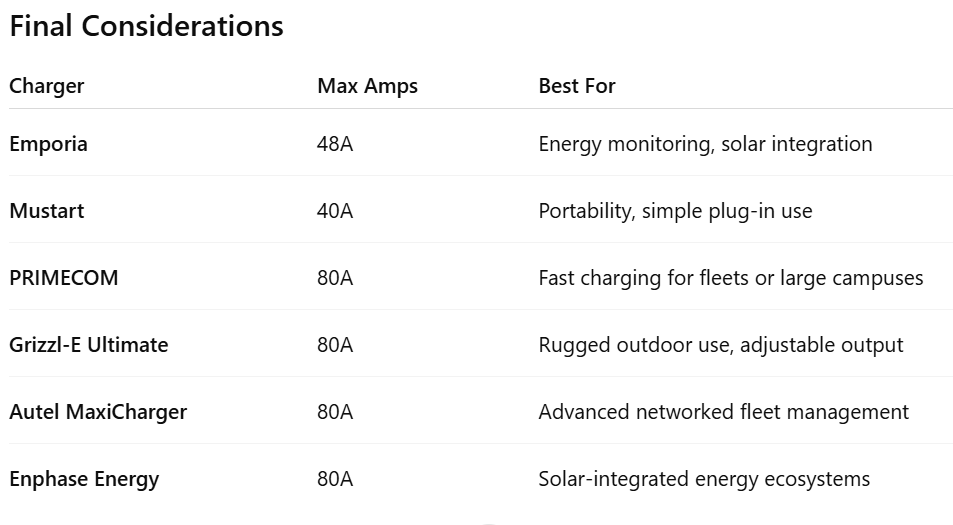
By selecting the right mix of features and installation options, your workplace can support a growing number of EV drivers while reducing energy costs, meeting sustainability goals, and preparing for long-term transportation trends.
Final Takeaway: Workplace Charging Is a Win-Win
Offering EV charging at your workplace is no longer a niche feature — it’s a strategic investment in employee satisfaction, fleet efficiency, brand leadership, and environmental impact.
With the right infrastructure, thoughtful policies, and help from federal or state incentives, your business can lead the charge in supporting a clean, electrified future.

